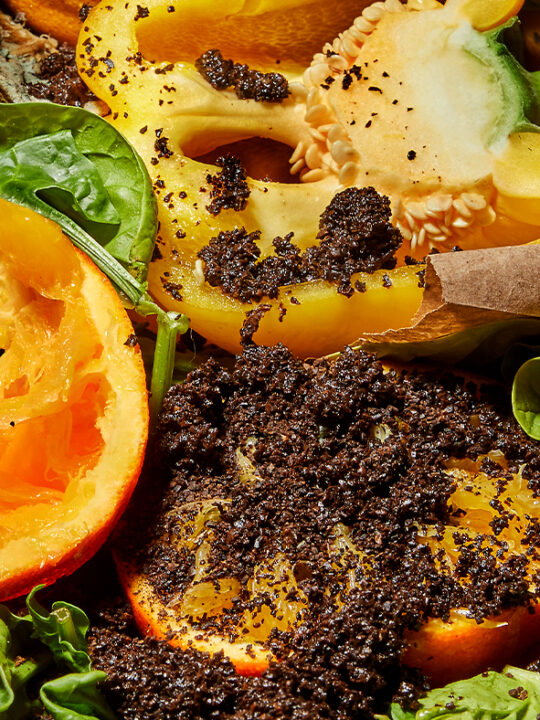
Not all agriculture is created equal. Most of us know that industrial animal agriculture is one of the most polluting processes on the planet (check out this article to learn more!), but what if I told you that not all agriculture hurts the planet? In fact, some types of farming practices are helping it.
But before jumping into that, let’s start by explaining the problem with conventional farming techniques…
The Problem with Conventional Farming
Conventional farming, which is often motivated by output rather than quality, usually involves machines to till the land. Tilling turns over the soil and breaks it up, which removes weeds and turns over the sod, making it easier to plant seeds. The problem with plowing and tilling is that it often kills off many living organisms in the soil, and in turn, degrades the nutrients of the soil. Because of this nutrient depletion, farmers often rely on chemical fertilizers, as well as fungicides, herbicides, and pesticides, to help grow crops. These chemicals then leach into waterways and disrupt entire ecosystems (learn more on the environmental dangers of conventional pesticides here!) If conventional tilling is done over and over for each harvest, it ultimately strips the soil of all nutrients — which creates dead soil.
Dead soil is unable to properly retain water, which increases water and topsoil runoff, and can lead to droughts and desertification. Since there are fewer microorganisms found in dead soil, there is also decreased nutrient availability, which not only means less biodiversity, but also food grown from dead soil is actually less nutrient dense.
Aside from soil health, conventional farming practices contribute to climate change. When soil is damaged or broken up by plowing and tilling, carbon dioxide within the soil (more on that later) is released into the atmosphere, which significantly contributes to the greenhouse gas effect (learn more about that here), and ocean acidification (learn more about that here).

How can we improve soil health and put carbon back into the ground? Two words: Regenerative Agriculture.
What is Regenerative Agriculture?
Rather than continuously destroying or depleting the soil, “Regenerative Agriculture” focuses on farming and grazing practices that maintain, rebuild, and restore soil health.
Why is healthy soil important?
Healthy soil is full of organisms — some that you’re able to see like earthworms, and others that you’re unable to, like microscopic fungi and bacteria. In fact, there are more organisms in one handful of healthy soil than there are humans on Earth! Every organism has a part to play, such as helping convert nutrients in the soil so that plants can use them to grow, or bringing water to other plants, or helping aerate the soil for better water absorption and longer root growth. Bottom line: Healthy soil allows more plants to grow, which creates more vibrant ecosystems.
Why are more plants important for the environment and climate change?
You probably already know that trees and other plants absorb CO2 from the atmosphere, and use it to grow through a process known as photosynthesis *cue flashbacks to science class*. But did you know, that much of the carbon that is pulled out of the atmosphere by trees and other photosynthetic plants, is actually drawn down into the soil through their roots? This is known as carbon sequestration. From there, carbon and carbohydrates are fed to the microbes, who then convert the carbon into usable nutrients to feedback to the tree or plant. So now what once was a CO2 problem in the atmosphere, actually helps feed microorganisms and plants.
In other words, plants and healthy soil are a massive carbon sink, which can help absorb and offset human greenhouse gas emissions. According to Ohio State soil physicist Dr. Rattan Lal, “A 2 percent increase in the carbon content of the planet’s soils could offset 100 percent of all greenhouse gas emissions that are currently going into the atmosphere.”
The climate crisis has also fundamentally altered the water cycle and rain patterns around the world. In some areas, increased temperatures have exasperated evaporation, droughts, and desertification; and in other areas, increased rainfall has led to more floods, hurricanes, and polluted runoff. The more organic matter you have (aka plant biodiversity and microbial rich soil), the more water-holding capacity you have as well.
But if a farmer is using regenerative methods and not disturbing the soil, they are instead mitigating climate change effects by building organic matter. And the more organic matter you have in the soil (aka plant biodiversity and microbial rich soil), the more water-holding capacity you have, which makes the farm more resistant to climate instability.
How Does Regenerative Agriculture Work?
Techniques will vary depending on the land that you’re working with, but the core principles include:
How can individuals get involved in the regenerative agriculture movement?
- Support local farmers that are using regenerative practices, or start conversations with farmers about the benefits of improving soil health, and using less tilling and chemical fertilizers.
- Start composting! Composting is not only an amazing way to reduce methane emissions, but the end result is incredible, nutrient dense compost that helps nourish and repair the soil. Check to see if there are any local organizations, farmers’ markets, community gardens, farms, schools, or parks that accept food scraps, or if you have the yard space, make a compost pile in your backyard! Learn about the different ways to compost at home here (trust me, you can do it from anywhere!) and if you’re looking for a compost bin, check out the one from Package Free!
- Start your own garden with whatever space you have, and focus on biodiversity and soil health! Even the smallest areas sequester carbon from the atmosphere!
- Limit your consumption of factory farmed animal products.
- Reach out to food companies and ask them about the farms that they source ingredients from, and encourage them to start having conversations with their suppliers about regenerative practices.
- Educate yourself! Films like the newly released documentary, Kiss the Ground, and the short film Food For Thought, Food For Life, delve deeper into the issues and ways to solve them!







